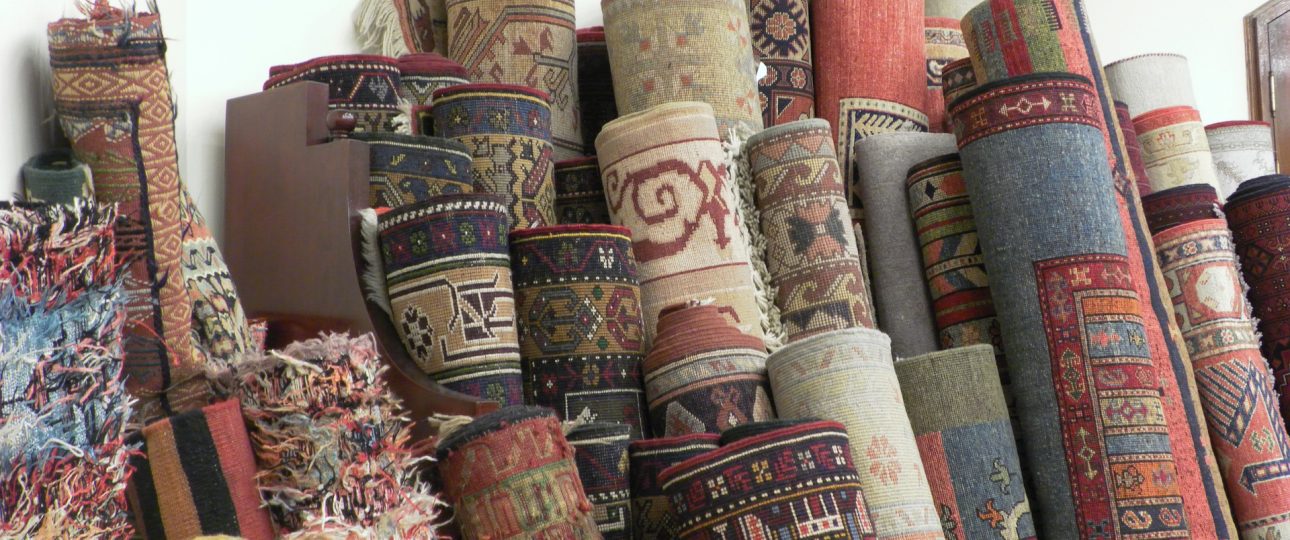Who doesn’t know them, the Turkish carpets? Turkish carpets have a rich past. Today, these carpets are known worldwide for their impressive knotting work, which raises the quality considerably.
What is the history of Turkish Carpets?
In the past, the carpet was seen as an important means of trade between Asia and Europe. The trade route often passed through Turkey as Constantinople served as the capital and was known as an intermediate station between Asia and Europe. The Constantinople that we know today is better known as Istanbul. In the museums of Istanbul, for example, there are still many beautiful old Oriental carpets from the former Constantinople.
What are The famous Turkish hand-knotted carpets?
Did you know that the oldest carpet in the world is the Pazryk carpet which is about 2400 years old? This carpet has properties that we still encounter when producing Turkish carpets and authentic Turkish knots are still used. The knotting of the carpet is what makes Turkish carpets so unique. There are 2 knots sticking out: the Turkish knot and the Persian knot. The Persian knot can be found in Persian rugs. Both are of eccentric value. A knotted rug is knotted with more than 250,000 knots per rug! The amount of knots that are processed in a carpet determines the quality. The carpets are knotted completely by hand. This is why you will see most rugs with the title hand-made carpets.
What costs a Turkish Carpet?
In addition to the fact that such a Turkish rug is completely knotted by hand, the pile height is also a clear indicator when determining the quality. All this together makes the carpet always different in price. Do not get surprised that you would pay more for a little carpet than a bigger-sized one. The wool is cut after knotting. The lower the pile, the higher the quality. It is often said that the quality of Turkish hand-knotted carpets can be recognized by the pile height.
What makes such a ‘Turkish rug’ unique is the variation in the color shade! The color of a Turkish carpet seems to change when the angle of the sun changes. This ensures that the rug appears lighter or darker at certain times. In addition, the Turkish rug is also known as the Kilim rug. Most producers work with a fixed symbol or pattern. You often see the same carpets in the store. However, Turkish hand-knotted carpets are all unique and do not follow a set pattern guideline. That is why you will never find the same Turkish hand-knotted carpets in the store.
All Turkish hand-knotted carpets are made of wool. A wool rug has properties that you can enjoy as a carpet lover! Your feet are always warm, the rug is antibacterial, it lasts a long time, is nice and soft, and almost impossible to get dirty!
Turkish Carpets: A Timeless Tradition
Turkish carpets, also known as Anatolian carpets, are hand-woven carpets that have been an integral part of Turkish culture for centuries. These carpets are not only beautiful but also serve a practical purpose in Turkish households. They are used as floor coverings, wall hangings, and even as prayer rugs.
Turkish carpets are made using traditional techniques that have been passed down through generations. The carpets are made from natural materials such as wool, silk, and cotton. The wool is typically sourced from sheep that are raised in the mountains of Turkey, while the silk is sourced from the silk cocoons of the Anatolian region. The natural dyes used to color the wool and silk are made from plants, roots, and insects.
The designs of Turkish carpets are influenced by the regions in which they are made. Each region has its own unique style, colors, and patterns. For example, the carpets made in the city of Hereke are known for their intricate designs and use of silk, while the carpets made in the village of Konya are known for their bold geometric patterns.
The process of making a Turkish carpet is time-consuming and requires great skill. The weavers use a vertical loom to weave the carpet, knotting each strand of wool or silk by hand. The weaver must pay close attention to every knot and ensure that the tension on the loom is consistent throughout the weaving process.
Turkish carpets are highly prized for their beauty and quality. They are often passed down as family heirlooms and can fetch a high price on the market. In recent years, there has been a renewed interest in Turkish carpets, both in Turkey and abroad. Many tourists visit Turkey specifically to purchase a handmade Turkish carpet to take back home.
In conclusion, Turkish carpets are a timeless tradition that has been a part of Turkish culture for centuries. They are not only beautiful but also serve a practical purpose in Turkish households. The intricate designs, natural materials, and traditional techniques used in the making of Turkish carpets make them highly prized and sought after around the world.

